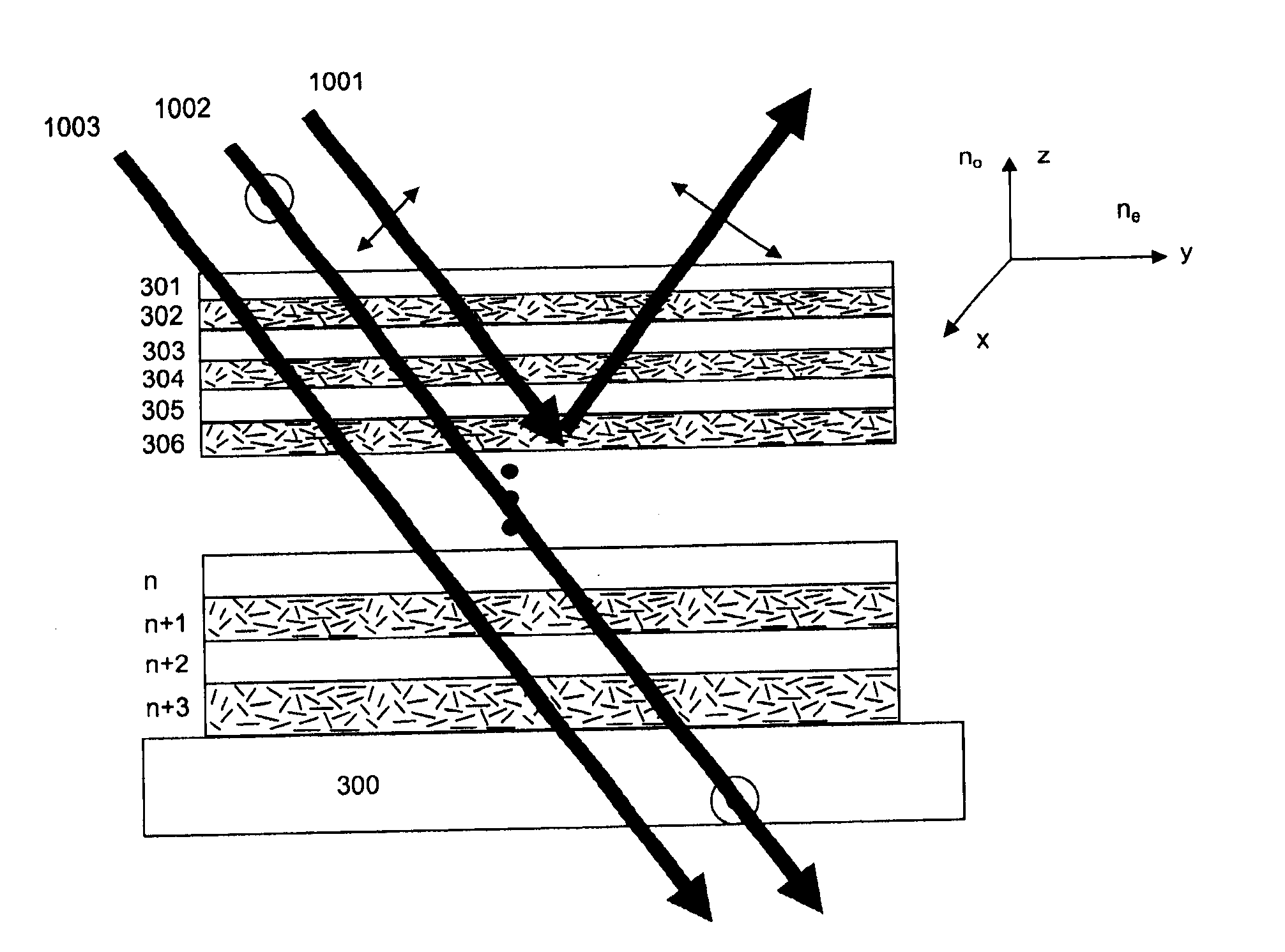Temperature activated optical films
a technology of temperature-activated optical films and dielectric optical structures, which is applied in the direction of instruments, polarising elements, lighting and heating apparatuses, etc., can solve the problems of not being able to adjust the solar energy control at the room temperature range, the system is not useful for the present application, and the technology is less attractive for window applications, etc., to achieve low transition temperature range, low infrared transmittance, and high visible light transmittance
- Summary
- Abstract
- Description
- Claims
- Application Information
AI Technical Summary
Benefits of technology
Problems solved by technology
Method used
Image
Examples
Embodiment Construction
[0033]As used herein, “a” or “an” means one or more.
[0034]As used herein, “Polarization” means the orientation of the electric field oscillations in the plane perpendicular to the electromagnetic wave's direction of travel.
[0035]As used herein, “μm” means micro meter, 1 / 1000000 of a meter in length.
[0036]As used herein, “nm” means nano meter, 1 / 1000000000 of a meter in length.
[0037]As used herein, “birefringent” and “birefringence” means an optical material that shows different effective index of refraction along different directions.
[0038]As used herein, “Optical axis” and “optical axes” means the principal direction or directions of the index ellipsoid of a birefringent material. For biaxial birefringent materials, there are three mutually perpendicular optical axis. For uniaxial materials, typically only one axis, the direction along the extraordinary index of refraction is used.
[0039]As used herein, “refractive index along an optical axis” means a numerical number that measures ...
PUM
| Property | Measurement | Unit |
|---|---|---|
| wavelengths | aaaaa | aaaaa |
| transition temperature | aaaaa | aaaaa |
| transition temperature | aaaaa | aaaaa |
Abstract
Description
Claims
Application Information
 Login to View More
Login to View More - R&D
- Intellectual Property
- Life Sciences
- Materials
- Tech Scout
- Unparalleled Data Quality
- Higher Quality Content
- 60% Fewer Hallucinations
Browse by: Latest US Patents, China's latest patents, Technical Efficacy Thesaurus, Application Domain, Technology Topic, Popular Technical Reports.
© 2025 PatSnap. All rights reserved.Legal|Privacy policy|Modern Slavery Act Transparency Statement|Sitemap|About US| Contact US: help@patsnap.com



